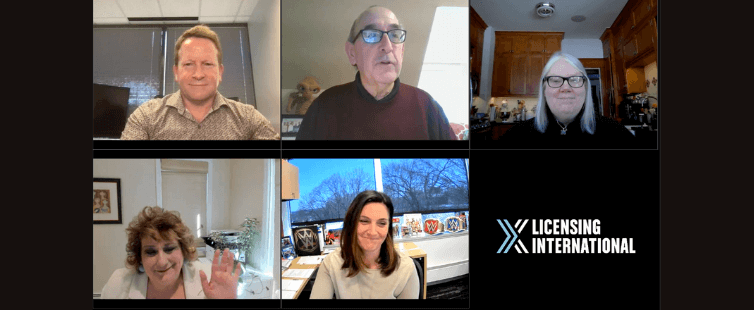Embracing Data, Developing Insights

The world is awash in information, and the licensing community is no different. But the challenge facing everyone is to turn data into actionable insights, whether to judge sales performance, identify new product opportunities and retail “white space” or hone in on potential new consumer segments. On a budget.
Here to stay
“Fact-based and consumer insight-driven licensing is here to stay,” said Brandgenuity’s Adina Avery-Grossman during last week’s Licensing International webinar on Embracing Data, Developing Insights, sponsored by MyMediaBox. “We are seeing so many more licensees and brand owners really looking at how we can use data and insight to do things well.
“The nice thing about it is you don’t have to be a big company with deep pockets and big budgets. Even smaller licensees and smaller brands can use the resources that are available to do real research.”
“Scrappy”
Indeed, the word “scrappy” was invoked several times by the panelists, as they described functioning in a marketplace that requires a combination a data-backed insights and the agility to react to rapidly changing consumer habits and desires.
“You have to balance the art with a little bit of science; these times were meant for scrappy research in addition to the big data,” said Leigh Ann Schwarzkopf of Project Partners Network. “You have to be looking at a variety of sources and using those to inform your decisions.”
WWE, for example, segments its fan base into four buckets – using data culled from such sources as its own OTT platform and attendees of its live events – as a tool to identify product opportunities. It also combines its internal data with outside sources to support its retail business development. “We could see some of our fans were grossly over-indexing in terms of buying apparel at [a major] retailer,” said WWE’s Sarah Cummins. “What we were finding is the amount of apparel placed at this retailer was a fraction of what we were selling through our direct-to-consumer shop,” pointing to an opportunity for its apparel licensee.
That’s data on a grand scale not practical to all – a fact acknowledged by all the participants. In some cases, it requires some extra foresight. MyMediaBox’s Eric Rennagel points to the advance in holograms that lead to data generation. “If you’re thoughtful about it, and put it somewhere on the packaging during the design process, and there’s a call to action there, you can get consumers to scan those tags and send them to a url and start to develop a relationship,” he said.
And there are ways to start small, particularly in a web-based world with a host of online tools as simple as Survey Monkey. “It doesn’t have to a an 18-month or 9-month project for $200,000 anymore; it’s a week to two weeks, and five grand,” said Schwarzkopf.
Added Avery-Grossman: “If you’re not doing any social listening done now, start with that. One of the research guys I work with said, “You can hire an intern to go through 400 consumer comments on a particular product and begin to bucket them by theme, which is almost like doing a segmentation analysis… You don’t have to pay me to do that.”
And that meshes with the fact that data needs to be gathered more quickly and translated into products and marketing plans to keep up with a fickle customer. “Those who are going to survive over the next number of years,” said Cummins, “are going to be the ones who are prepared to be nimble and prepared not to talk about ‘This is how we’ve always done this.’”
Want to watch the entire hour-long webinar, or access the Licensing International webinar archive? Click here for more information.




